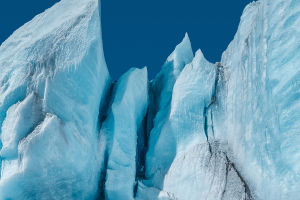The Aurora Borealis, also known as the Northern Lights, has fascinated people for thousands of years. The earliest record of human appreciation of the aurora borealis dates back to nearly 10,000 years ago in a cave mural in Rufignac, southwestern France.
The mural depicts the shape of a curtain of aurora borealis on the red clay at the top of the cave. The brilliance and splendor of the Northern Lights are difficult to reproduce in words.
Anyone who has witnessed an aurora borealis outbreak will surely understand the obsession of visitors from all over the world with this natural phenomenon.
The Northern Lights can be observed at high latitudes where the stars twinkle in the darkness of the night. A vague band of light suddenly appears in the sky, before fading into the darkness. Another band of light overlaps until the entire sky is lit up by an iridescent band of light, leaving people in awe of nature.
Before the advent of modern astronomy, people interpreted the aurora borealis in various ways, leading to the creation of myths and legends.
Iceland is one of the best places in the world to observe the aurora borealis due to its long aurora season, which lasts from late August to April every year. Many tourists and photographers travel to Iceland to see the Northern Lights and realize their long-standing wish to see this natural phenomenon.
If they are unfortunate and do not see the aurora borealis on their first trip, they plan a second trip immediately.
The Northern Lights are a purely natural phenomenon and encounters with them depend on luck. The intensity and frequency of each aurora vary from time to time.
Some people think that Iceland has auroras all year round and choose to visit during the sunny summer months, while others believe that the colder the weather, the more frequent the auroras will appear, and miss the aurora bursts in warm weather.
Some people stay in the capital, Reykjavik, and do not venture out into the countryside, missing the chance to observe the Northern Lights due to urban light sources.
The formation of the aurora borealis is a complex process involving charged particles generated by solar winds, the attraction of charged particles to the north and south poles by the Earth's magnetic field, and operational excitation with atmospheric components.
The "solar wind" is a type of energy continuously radiated by the Sun into the universe, composed of electrons and protons. The intense activity of the Sun emits countless charged particles.
When these particles enter the range of the Earth's magnetic field, they are influenced by it and enter the upper atmosphere near the north and south magnetic poles at high speeds.
They collide with oxygen atoms, nitrogen molecules, and other masses, producing an "electromagnetic storm" and the phenomenon of "visible light," which is known as the aurora borealis.
The color of the aurora borealis depends on the type of atom. Oxygen atoms produce green and red auroras, while nitrogen molecules produce blue and purple auroras. The shape of the aurora borealis can vary from arcs to spirals and even appear as a diffuse glow across the sky.
In addition to its natural beauty, the aurora borealis also has scientific importance. Scientists use data from auroras to study the Earth's atmosphere and the interaction of the Sun with the Earth.
They also use this data to make predictions about space weather, which can impact satellite and communication systems on Earth.
The aurora borealis is a spectacular natural phenomenon that has fascinated people for thousands of years. Iceland is one of the best places in the world to observe the Northern Lights, but encounters with them are dependent on luck.


